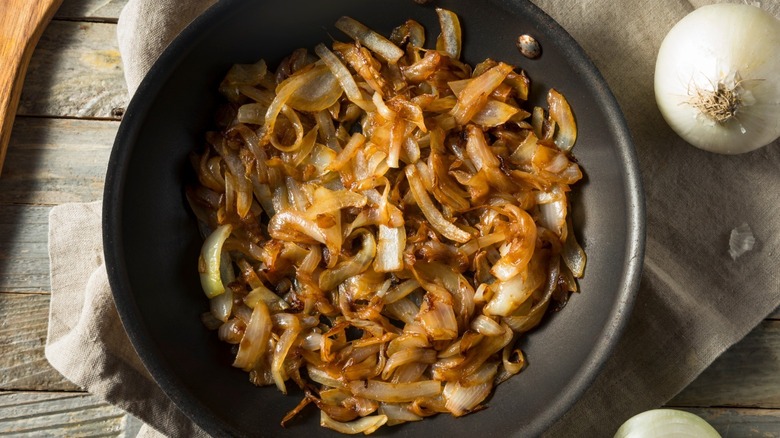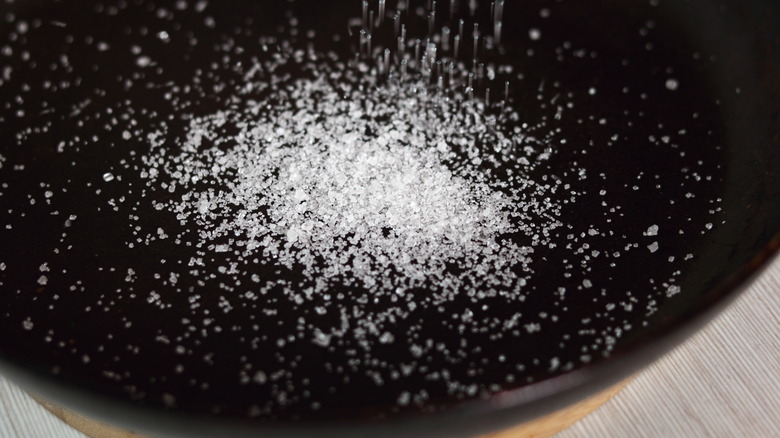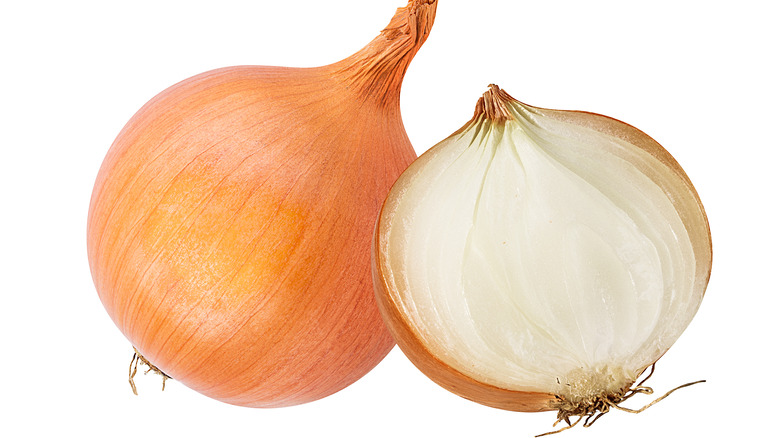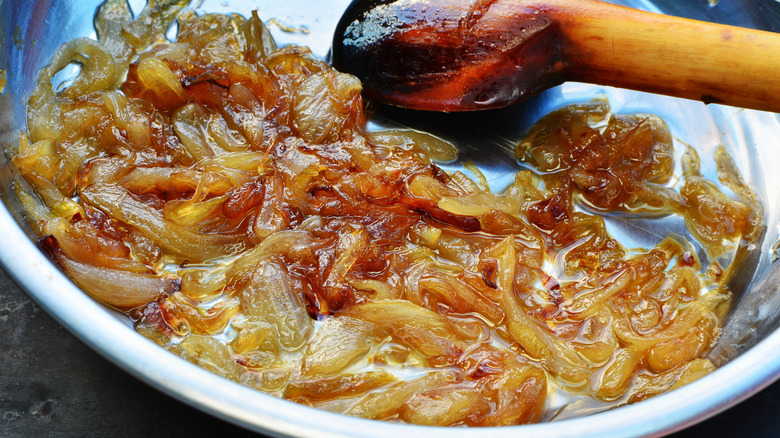The Best Way To Caramelize Onions, According To Science
Like baking, cooking can be a science and an art. However, cooking can be less exacting and more forgiving than baking. Of course, not everyone agrees, per Slate, which argues that baking can be as much an exercise in creativity and flexibility as cooking. But if you've ever tried to improvise baking a batch of gluten-free cookies based on a recipe that calls for ordinary wheat flour, you might find yourself disagreeing when your cookies crumble halfway between the baking sheet and the plate. And that's what will happen, because gluten-free cookies — as a scientific matter — require an additional binding agent (like egg or xanthan gum) to make up for the absence of gluten. Gluten's role, among other things, is to form a cellular "net" that holds your cookies together, per Modernist Cuisine.
By contrast, there's more room to improvise in cooking. For example, there isn't one correct way to caramelize onions. Rather, many variations exist, as J. Kenji López-Alt points out in his analysis, via Serious Eats. And while López-Alt makes some strong scientific arguments about why his process makes the best caramelized onions, we'd argue you could still make the "best" caramelized onions while improvising on his method.
If you're willing to add sugar, you can save time
In his Food Lab column for Serious Eats, J. Kenji López-Alt suggests several science-based hacks for making the best caramelized onions. What becomes immediately apparent, however, is that when he says "best," what he really means is fastest. In this particular column, López-Alt does acknowledge that caramelizing onions traditionally requires as much as 45 minutes of cooking over very low heat. In fact, as Serious Eats has stated, recipes that call for less time should be used with caution.
Nevertheless, López-Alt points out that there's something to be said for getting the same results in less time. The managing culinary director of Serious Eats spent a week coming up with a science-based method for caramelizing onions that takes a mere 15 to 20 minutes. That method involves adding actual sugar to the onions. Scientifically speaking, when you caramelize onions, you're getting those onions to release their sugars into the sweet and jammy end result (via Master Class). Accordingly, adding sugar should help make up for some of the natural sugar that won't be released from the onions in a mere 20 minutes of cooking. Of course, you'll need the right onions for the task.
If you're using sugar, start with the right onion
J. Kenji López-Alt's science-based method for making the best caramelized onions in quick time involves using an ordinary yellow onion, as opposed to a sweet onion. The reason is that, as López-Alt explains, yellow onions possess "pungent irritants" that add depth to the sweetness of the onions as they caramelize. Yellow onions also contain higher levels of natural sugars than say red onions, per Master Class. Using a yellow onion will also replace some of the depth that cooking the onions slowly over a much longer period of time would otherwise have produced.
Next comes the addition of actual sugar. López-Alt says he found that a "touch" of sugar is all you need. The added sugar will stand in for some of the caramelization that won't take place because of the quicker cooking time. But don't worry, there are other methods to achieve the caramelization and coloring that would have occurred over 45 minutes.
The caramelization process, only faster
Caramelization begins when most of the liquid has cooked out of the onions, and the sugar breaks down into smaller compounds that are sweeter than actual sugar. But how do these things happen when the cooking time is halved? J. Kenji López-Alt's process uses a secret ingredient: baking soda. Baking soda is a base, per Discover Food Tech, and, as López-Alt says, the addition of a base encourages the Maillard reaction (the tell-tale browning that we associate with caramelization) to take place more quickly. All you need is a pinch, or if you want to get scientific about it, López-Alt recommends no more than a quarter teaspoon per pound of chopped onions.
With the pH of the onions now raised by the baking soda, López-Alt also raises the heat. Yes, it's the opposite of low and slow, but he says it works — as long as you add water to the skillet when it starts getting too hot. Adding water cools the onions slightly, but since caramelization can begin at as low as 230 F, according to López-Alt, the onions will continue to caramelize faster because the heat source is more intense.
If fast isn't best in your book, but you're still too impatient to spend 45 minutes stirring onions on the stove, here's an alternative method to caramelize onions.



